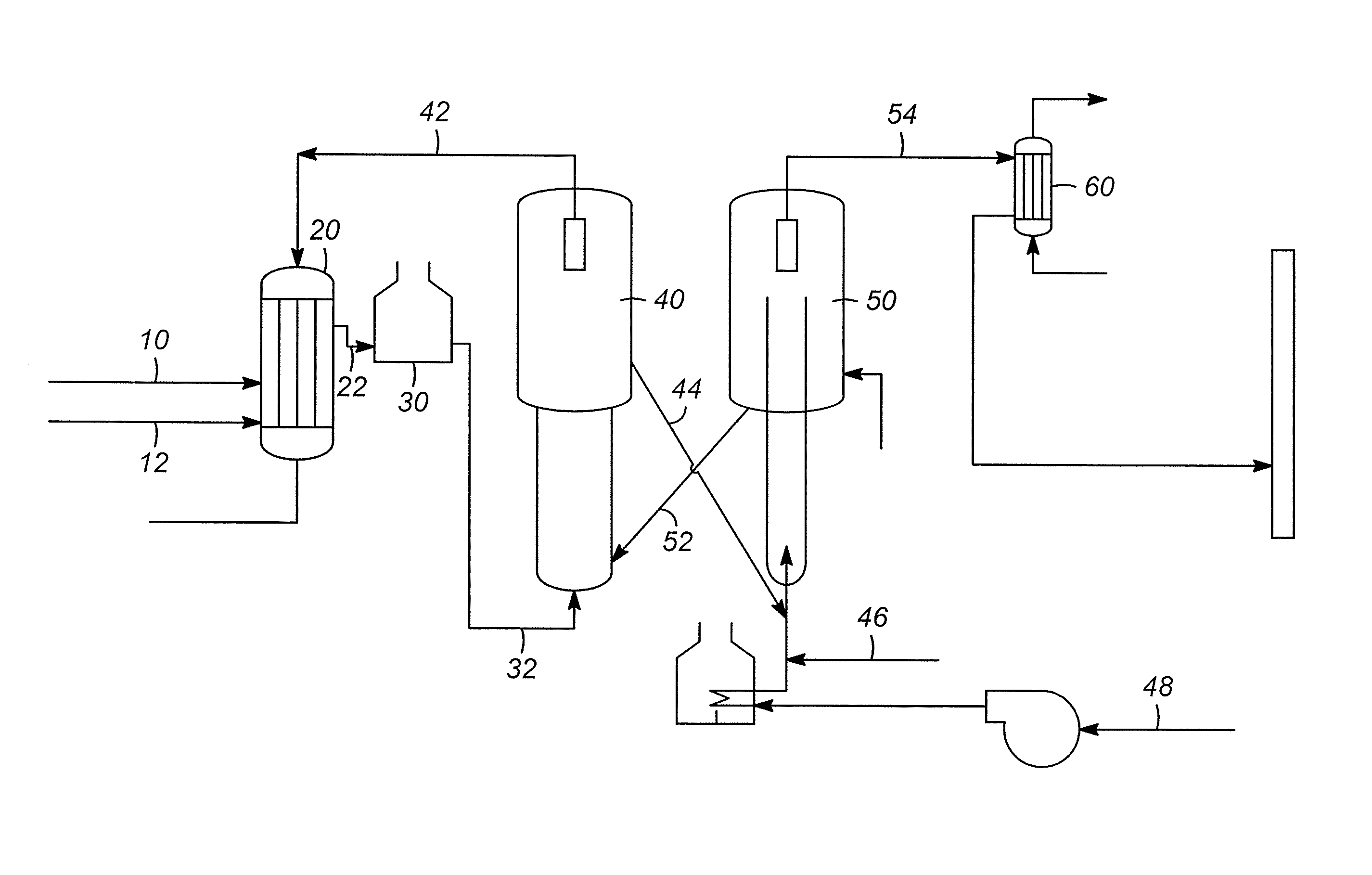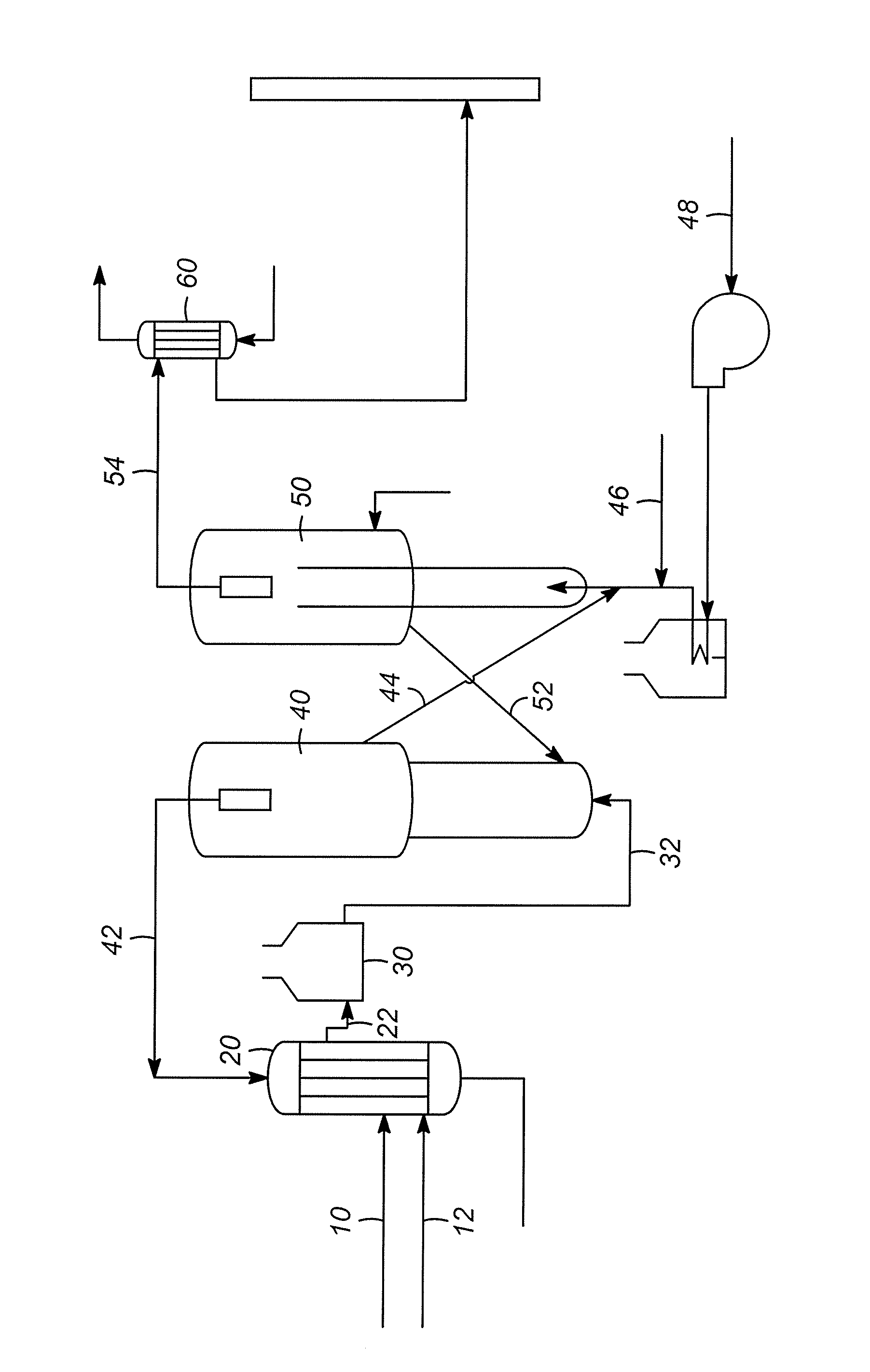Reactor Flowscheme for Dehydrogenation of Propane to Propylene
- Summary
- Abstract
- Description
- Claims
- Application Information
AI Technical Summary
Benefits of technology
Problems solved by technology
Method used
Image
Examples
Embodiment Construction
[0008]The dehydrogenation of hydrocarbons is important for producing olefins. The olefins are important for a variety of products, such as polymer plastics, or the use of olefins in the formation of alkylaryl compounds. A process for the dehydrogenation of propane is presented. The process comprises passing a preheated propane feedstream to a dehydrogenation reactor. The feedstream is contacted with a fluidized catalyst in the dehydrogenation reactor, thereby generating a product stream comprising propylene. The reactor is a fast fluidizing reactor, where the reactor is operated in a flow regime to turbulently mix the catalyst and feedstream. The catalyst and product stream are carried up through the reactor and separated in a separation section, whereby a product stream comprising propylene is passed out of the reactor. A spent catalyst is passed to a catalyst regeneration unit, to regenerate the catalyst for return to the dehydrogenation reactor.
[0009]The process of the fast fluid...
PUM
| Property | Measurement | Unit |
|---|---|---|
| Temperature | aaaaa | aaaaa |
| Temperature | aaaaa | aaaaa |
| Temperature | aaaaa | aaaaa |
Abstract
Description
Claims
Application Information
 Login to View More
Login to View More - R&D
- Intellectual Property
- Life Sciences
- Materials
- Tech Scout
- Unparalleled Data Quality
- Higher Quality Content
- 60% Fewer Hallucinations
Browse by: Latest US Patents, China's latest patents, Technical Efficacy Thesaurus, Application Domain, Technology Topic, Popular Technical Reports.
© 2025 PatSnap. All rights reserved.Legal|Privacy policy|Modern Slavery Act Transparency Statement|Sitemap|About US| Contact US: help@patsnap.com


